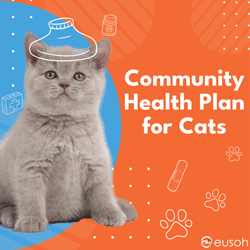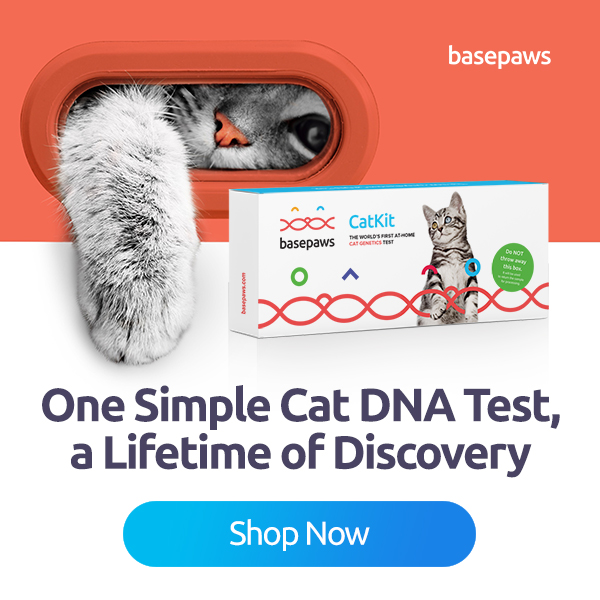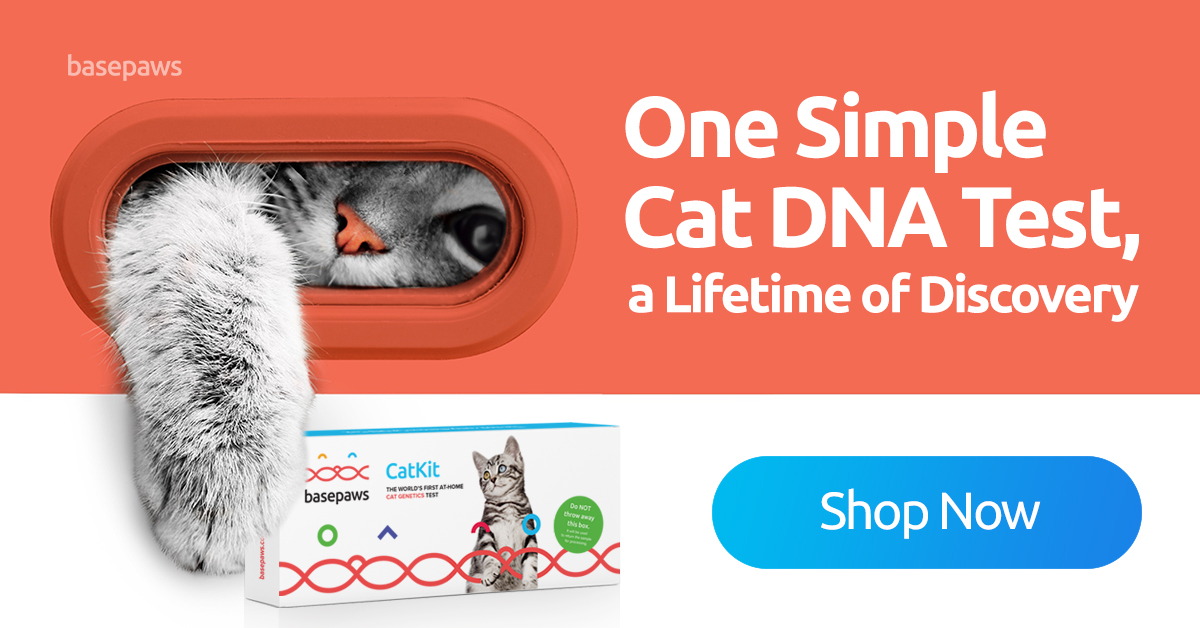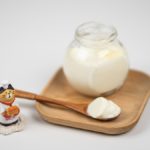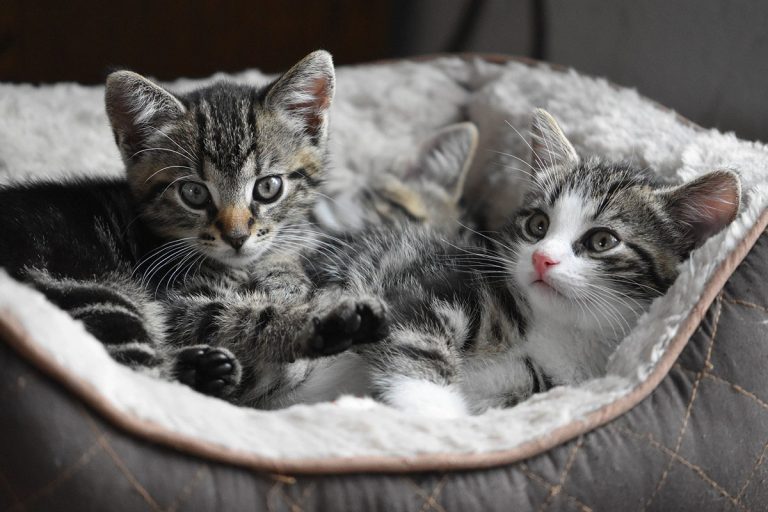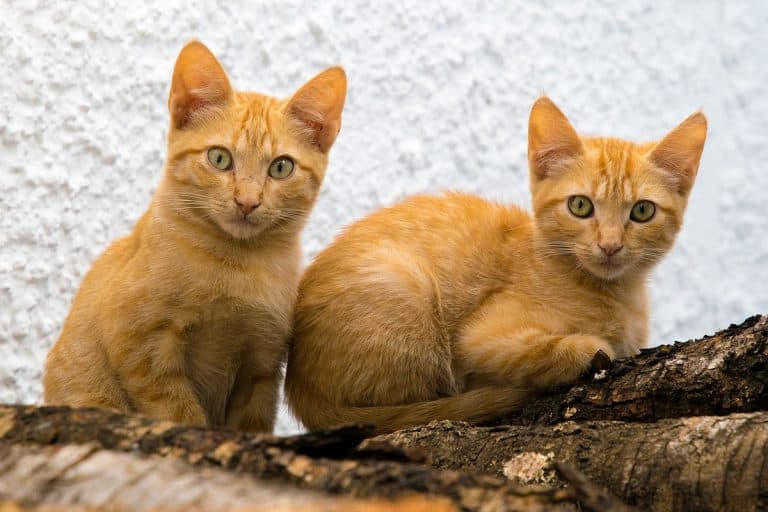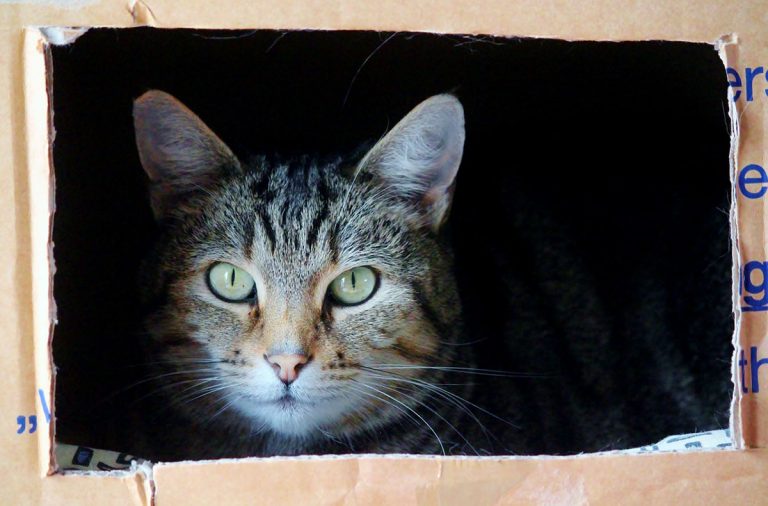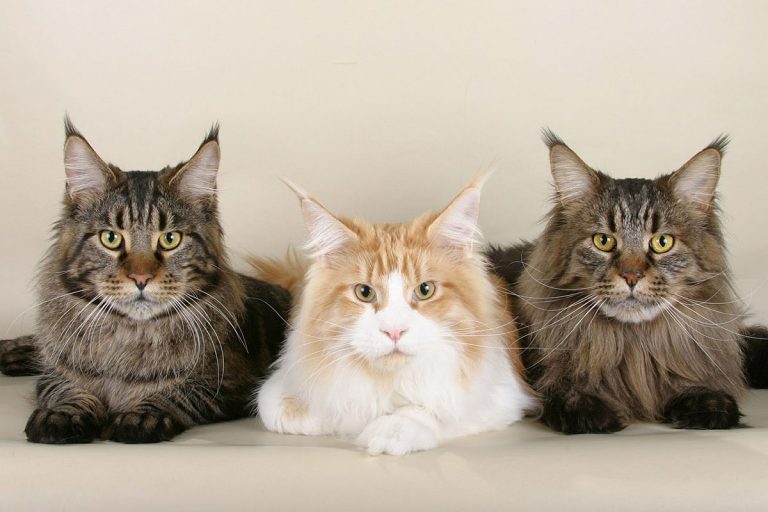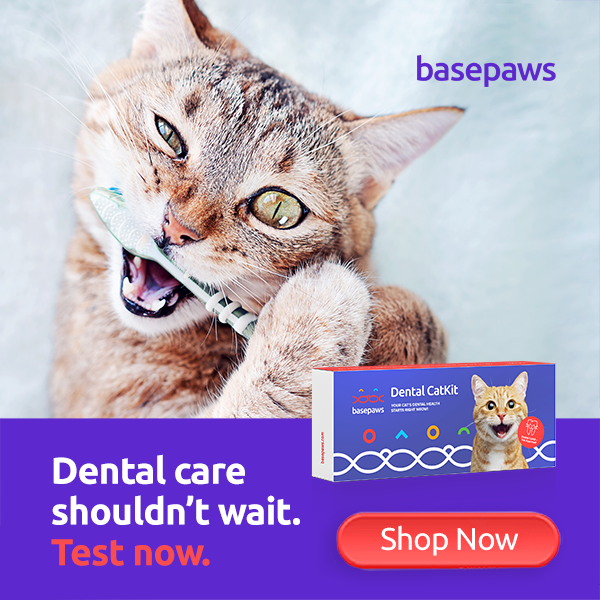If your older cat suddenly starts losing weight or eating a whole lot more, she might be suffering from hyperthyroidism. Read our guide to find out how to recognize the signs of an overactive thyroid and what is the best food for a cat with hyperthyroidism.
In this article we will review our top 5 choices of cat food for hyperthyroid cats.
DISCLAIMER: This post may contain affiliate links. If you click one of these links and decide to make a purchase, we may receive a small commission. This comes at no extra cost to you and helps to keep the site alive and up to date. If you want more information, please review our Privacy Policy. Thank you for your support!
A Quick Look At Our Favorites
| Product | Rating | Why We Like It | |||||||||
|---|---|---|---|---|---|---|---|---|---|---|---|
| 1 |  | Instinct Original | Quality Protein | Buy on Amazon | |||||||
| 2 |  | Instinct Ultimate Protein | No Additives | Buy on Amazon | |||||||
| 3 |  | Blue Buffalo Wilderness | Hypoallergenic | Buy on Amazon | |||||||
| 4 |  | Purina Beyond | Grain Free Dry Food | Buy on Amazon | |||||||
| 5 |  | Hill's Pet Prescription Diet Y/D | Thyroid Support | Buy on Amazon | |||||||
| Moisture | Protein* (min.) | Fat* (min.) | Fiber* (max.) | Carbs* (approx.) | Ash* (approx.) | Calories (approx.) | Allergens | ||||
| 1 |  | 78% | 50% | 34% | 14% | 2% | 0% | 104 / 100g | seafood | ||
| 2 |  | 78% | 50% | 34% | 14% | 2% | 0% | 104 / 100g | seafood | ||
| 3 |  | 78% | 45% | 36% | 7% | 11% | 0% | 112 / 100g | none | ||
| 4 |  | 12% | 40% | 16% | 5% | 38% | 2% | 357 / 100g | seafood | ||
| 5 |  | 73.5% | 35% | 27% | 3% | 32% | 2% | 124 / 100g | corn | ||
| * on a dry matter basis | |||||||||||
| What We Like | What We Don't Like | ||||||||||
| 1 |  |
|
| ||||||||
| 2 |  |
|
| ||||||||
| 3 |  |
|
| ||||||||
| 4 |  |
|
| ||||||||
| 5 |  |
|
| ||||||||
| 1 |  | Instinct Original Quality Protein | Buy on Amazon | ||
| 2 |  | Instinct Ultimate Protein No Additives | Buy on Amazon | ||
| 3 |  | Blue Buffalo Wilderness Hypoallergenic | Buy on Amazon | ||
| 4 |  | Purina Beyond Grain Free Dry Food | Buy on Amazon | ||
| 5 |  | Hill's Pet Prescription Diet Y/D Thyroid Support | Buy on Amazon | ||
Our Top Choices Of Cat Food For Hyperthyroid Cats
We’ve selected our top five favorite cat foods for kitties with hyperthyroidism. All our choices contain healthy amounts of animal protein and fats, no soy, grains or gluten, and plenty of vitamins and minerals to support your cat’s organ functions.
A WORD OF CAUTION: Always be careful when introducing your cat to a new food. The change in nutritional composition can cause digestive upset or allergic reactions, so it is best to take it slowly. Give her only a bit of the food at first, combined with her old food, and monitor how well your cat does on it. If you see any signs of an allergic reaction (difficulty breathing, rashes, elevated heart rate, diarrhea, vomiting) switch back to her old food and contact your vet immediately.
Instinct Original Grain-Free Paté
Instinct Original Grain Free Paté is a completely natural cat food made from whole food ingredients. It contains no filler ingredients, only high-quality animal protein, and comes in four meaty flavors. It is a perfect, balanced food for hyperthyroid cats that really makes their coat shine.
Now, since it is made from whole food ingredients, there might be the occasional bone in the food. Don’t be alarmed by this. Cats can eat and digest bones just fine, as long as they are uncooked. If you see a sharp edge on the bone or think it might be a bit too big for your kitty, just fish it out before serving the food.
This wet food does contain a few ingredients that might cause concern: cranberries, kale and fish oil. Cranberries are often added to cat food, supposedly to improve urinary health. However, it is not proven to be helpful at all, and might actually be harmful. Nevertheless, the amount of cranberries in this food is extremely low and accompanied by so many good ingredients that I’m willing to overlook it.
Kale is a natural source of iodine, which stimulates the production of thyroid hormone. Some iodine is good for cats, but researchers don’t agree on how much. Lower iodine levels are recommended for cats with hyperthyroidism. But, again, the exact levels are still a guess. Since there is so much uncertainty about the topic, and the amount of kale is small, I would not worry about it too much.
The fish oil, on the other hand, is something worth noting. If your cat is allergic to seafood, then definitely do NOT feed them this food.
| What We Like |
|---|
|
| What We Don't Like |
|---|
|
Related Post: Is Pet Insurance Worth It For Indoor Cats?
Is pet insurance worth it for indoor cats? Read this guide to learn about pet insurance for cats and calculate if it is really worth it for your indoor cat.Instinct Ultimate Protein Grain-Free Paté
On the surface, Instinct Ultimate Protein looks a lot like Instinct Original. They are very similar, but not the same. Where as Instinct Original contains 95% meat, Instinct Ultimate Protein gets 95% of its proteins from meat. The other 5% comes from vegetables. That is a key difference.
Ultimate Protein still deserves a place on our list, because the protein content is really high. Especially if you go for the Real Rabbit Recipe.
Just like Instinct Original, this food does contain cranberries, kale and fish oil. If any of these ingredients are problematic for your cat, you should best avoid wet food from Instinct all together. If it is not a concern to you, then I am sure your cat will be very happy to munch on this delicious paté.
| What We Like |
|---|
|
| What We Don't Like |
|---|
|
Blue Buffalo Wilderness High Protein Grain-Free Paté
Blue Buffalo Wilderness High Protein Paté is a great alternative for cats who can’t have fish or seafood. The only source of protein in this food is 100% real chicken, which makes it a very healthy choice. It also has a higher fat content. If your cat has lost weight due to her hyperthyroidism, give her this paté to regain some of that muscle mass.
This product does contain some additives, such as guar gum, which is a controversial ingredient. Despite the controversy, guar gum is not bad for hyperthyroid cats, as it can actually slightly slow down metabolism.
Another controversial ingredient that is used is carrageenan. Some people prefer to feed their cat a diet without carrageenan, because a few studies have shown that it may cause inflammation of the colon. It should be noted, though, that these studies used a different, degraded form of carrageenan than is found in cat food. Unless your cat already suffers from irritable bowel disease, it is okay to feed her this food.
| What We Like |
|---|
|
| What We Don't Like |
|---|
|
Purina Beyond Chicken And Egg Grain-Free Adult Dry Cat Food
Purina Beyond Chicken And Egg is the only dry food on our list. Some kitties or cat owners may prefer a mix of wet and dry foods over a completely wet diet. Unfortunately, most dry cat foods consist of mostly grains. I definitely don’t recommend feeding that to a hyperthyroid cat because of her prediabetic state.
Check out a full nutritional analysis of Purina Beyond Chicken And Egg in our Cat Food Database.
Purina Beyond is 100% grain- and soy-free. It contains no artificial additives or preservatives. The proteins in this food come from chicken, eggs and peas. The peas are not ideal, but a very good alternative to grains for a dry cat food. Supplement it with a wet food with lots of animal protein to give your cat a balanced diet.
One ingredient that might worry you is cassava root flour. Raw cassava is known to be toxic to cats. The dried meal or flour is not, unless it is ingested in high quantities. Purina Beyond Chicken And Egg contains cassava flour in such low quantities that it is safe for your cat to eat.
| What We Like |
|---|
|
| What We Don't Like |
|---|
|
Hill’s Pet Prescription Diet Y/D Thyroid Care
Hill’s Pet Prescription Diet Y/D Thyroid Care is a low iodine wet food especially designed to restore thyroid health in cats. It is prescription, so don’t feed this to your cat unless your vet instructed you to do so. And if you do, make sure it is the only thing she eats. Any treats or food outside her diet should be avoided for this to work.
What I like about this food is that it actually supports the medical treatment, instead of merely managing the symptoms. A downside is that it only comes in one flavor. If your cat is fussy about eating it, you have no second option to try. Hill’s Pet does have a dry food for thyroid care as well, but no variation in flavors there either.
If you can get your cat to enjoy Hill’s Pet Y/D Thyroid Care, then you should expect to see a real improvement in her health within three weeks. I do not recommend feeding this food to your cat beyond this point, though. The actual ingredients are a bit questionable (pork by-products, corn flour, guar gum). Also, it has a lower protein content and a higher carb content than the average cat food.
You can find Hill’s Pet Y/D Thyroid Care in our Cat Food Database.
| What We Like |
|---|
|
| What We Don't Like |
|---|
|
Our Top Pick: Instinct Original Grain-Free Paté
If your cat is suffering from hyperthyroidism, a natural diet with quality protein can make a real difference. That is why Instinct Original Grain-Free Paté is our top choice for hyperthyroid cats. Instinct’s philosophy is to feed animals what they would naturally eat in the wild. It makes sense that that is what is most healthy for them. Compared to other products, this cat food will give help to minimize your cat’s symptoms, without introducing harmful substances into her system.
Feline Hyperthyroidism
Hyperthyroidism is a common disease among older cats. In most cases it is caused by a benign tumor on the thyroid gland. The thyroid then starts to produce more thyroid hormone, which in turn speeds up your cat’s metabolism.
It is important to catch hyperthyroidism early. Your cat could be suffering from feline hyperthyroidism if she shows any of these symptoms:
- Sudden weight loss
- A sudden increase in appetite and thirst
- Hyperactivity
- High blood pressure and an elevated heart rate
- Sweating and a poor-looking coat
- Vomiting
If you recognize any of these symptoms in your senior cat, please take her to the vet immediately.
Treating Hyperthyroidism In Cats
There are several treatment options for feline hyperthyroidism. Most cat owners choose to treat their hyperthyroid cat with medication. This does not cure the disease, but helps to alleviate symptoms and prolong your cat’s life. She will have to take a pill twice a day for the rest of her life.
Second, there is the option of surgery. If medication is not a solution for you and you have the funds for an operation, then this might be the way to go. The surgeon will try to remove the enlarged part of the thyroid gland and, if successful, effectively cure your cat’s hyperthyroidism.
As with any surgery, there are some risks you should be aware of. Complications could arise during and after surgery, if it is not performed perfectly. And if any of the affected thyroid gland is left behind, your cat may not be cured after all.
The third, and most expensive, option for treating feline hyperthyroidism is radioactive iodine therapy. Yes, radioactive. This form of therapy exists for humans too and seems to be safe and very effective. They will inject some radioactive iodine, which destroys only the affected tissue of the thyroid. Leaving your cat with a completely healthy thyroid.
It sounds like a dream, but it might be a nightmare for your poor kitty. The treatment has to be administered at a special facility and your cat will have to stay there until the radioactivity wears off. Which could be more than a week. And the people taking care of her aren’t allowed to pet her for comfort either. This can all be very traumatizing to a cat, so I would consider this only as a last resort.
Medication
Since you’re reading this, you probably chose the route of medication. As said, your cat will have to take this medication for the rest of her life. There are some things you should look out for:
- Allergic reactions – The medication for hyperthyroidism can cause extreme itchiness of the face and neck. Luckily, if your cat is allergic, you will know after the first pill and you can immediately stop the medication.
- Gastrointestinal problems – Cats with hyperthyroidism often develop problems with their colon. If your hyperthyroid cat won’t eat, starts vomiting and/or has diarrhea, please take her to the vet as soon as possible. If left untreated, these issues can lead to severe, even fatal, consequences very quickly.
- Kidney disease – Hyperthyroidism can mask underlying issues, such as a diminished kidney function. If your cat is on hyperthyroid medication, be sure to go to the vet for regular check-ups and ask them to check your cat’s kidney function as well as the levels of thyroid hormone.
- Diabetes – There is evidence that hyperthyroidism changes the way your cat processes glucose and insulin to such a degree that she basically enters a pre-diabetic state. Unfortunately, this change is not always reversed by a successful treatment of hyperthyroidism. Many cats who have or have had feline hyperthyroidism become diabetic not long after their diagnosis or treatment.
Most of these issues can be mitigated by a proper feline diet. It’s important to note that diet alone is not a treatment for hyperthyroidism. If you suspect your cat has an overactive thyroid and you haven’t seen a vet about it, please go do so now. Without proper treatment your cat’s issues are only going to get worse. You may not notice how rapidly she is decreasing, because you are masking her symptoms with a diet.
Related Post: Homemade Probiotic Yogurt For Cats In 4 Easy Steps
Making your own homemade probiotic yogurt for cats is easy! Just follow these 4 steps to create a healthy, all natural treat for your cat.A Healthy Diet For Hyperthyroid Cats
A cat on hyperthyroid medication requires a highly digestible diet to alleviate symptoms and minimize the risk of other diseases developing. Older cats are already prone to dehydration and this can be exacerbated by an overactive thyroid gland, so I recommend feeding your cat mostly, or exclusively, wet food.
A healthy diet for hyperthyroid cats includes:
- Highly digestible animal protein – When picking a food for a hyperthyroid cat, you should pay extra attention to the amount of protein. This is what your cat’s motor runs on and should be the bulk of her diet. The type of protein is also important. Choose a food with animal protein (meat), such as chicken, turkey, rabbit, or duck.
- Healthy fats and fatty acids – Since hyperthyroid cats need to consume more energy per meal, it is okay to go for a food with a higher fat content. As long as they are healthy fats and they do not outweigh the protein content.
- Low levels of carbohydrates – Feeding your cat too many carbs can put them on the path to diabetes. Remember, cats don’t naturally eat grains and also have difficulty digesting them. If your cat’s health is already compromised, it is best not to put any extra strain on their system.
- Low levels of phosphorus – Phosphorus is damaging to the kidneys. Cats with hyperthyroidism are susceptible to kidney disease. You can lower the risk of this happening by choosing a food with lower levels of phosphorus.
- Restricted levels of iodine – Iodine is used by the thyroid gland to produce the thyroid hormone. If you restrict the amount of iodine in your cat’s diet, you reduce the amount of hormone produced. This works to alleviate the symptoms of hyperthyroidism. A word of caution: if you choose a low iodine food, make sure it is the only thing your cat eats. Other foods or treats that do contain iodine will negate the effects of the diet and render your efforts useless. If you have more than one cat and they have access to each other’s food, this may not be the best approach. On top of that, research isn’t conclusive about what is a healthy amount of iodine for a cat to begin with. So it’s a bit of a shot in the dark, really.
- Lots of moisture – Hyperthyroid kitties are extra thirsty and more prone to constipation from dehydration. Help your cat spend less time at her watering bowl with a diet that is high in moisture, like a paté. This will contribute to her overall health, but especially her kidneys. If you are already feeding your cat a wet diet and she is still drinking a lot, it may be a sign of renal problems or diabetes. Definitely go see a vet.
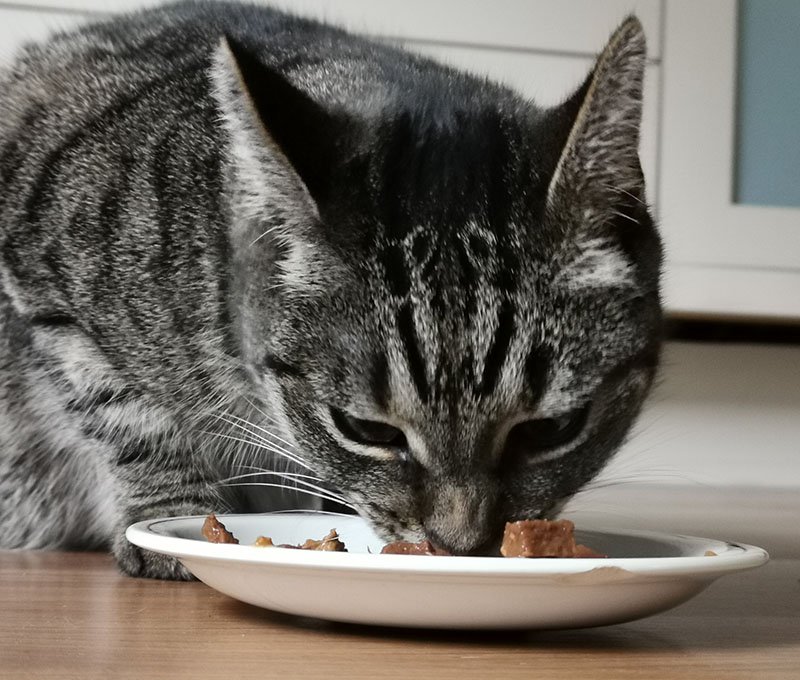
What you should NOT feed a cat with hyperthyroidism:
- Fish – Fish does not naturally fit into a cat’s diet. It was added to commercial cat food during WWII, when meat was scarce and expensive. But fish can contain a lot of toxins that are especially harmful to cats with digestive problems. Stick to a meat only diet to keep your hyperthyroid cat healthy.
- Soy – Soy is added as a protein to many commercial cat foods to cheaply bulk up the calories. Unfortunately, soy is difficult to digest and can actually contribute to thyroid overactivity. Therefore it is not recommended for cats with hyperthyroidism to eat any soy.
- Grains – Grains are carbohydrates. The body converts these into energy by way of sugars. Eating too much grain can put your kitty at risk of diabetes. Of course, most dry foods out there consist almost completely of grains. If you choose to keep feeding this to your cat, please supplement it with a high-quality, grain-free wet food.
- Fruits – Fruits are not only difficult to digest, but also loaded with sugar. Your cat should be getting the bulk of its calories from protein, so it’s best to avoid foods that contain fruits.

